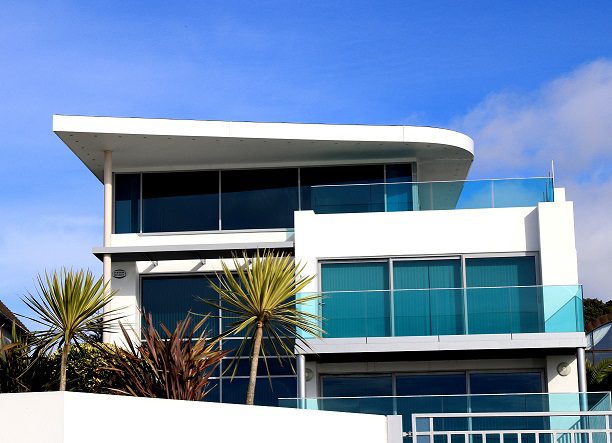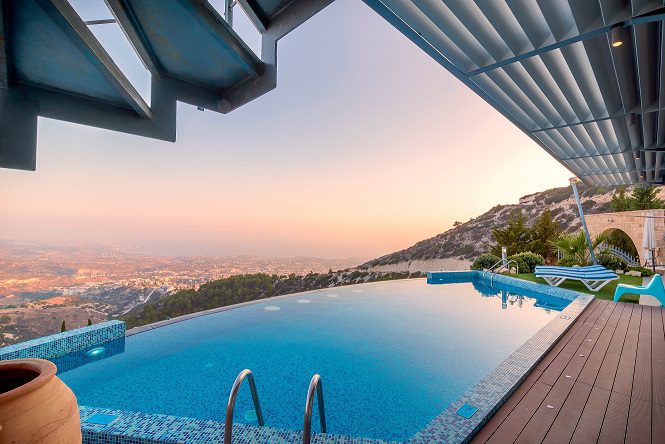
What’s Hot in Luxury Home Trends



April 19, 2021
Much has been written of the somewhat counterintuitive impact of the pandemic on residential real estate, but how have the wealthy adjusted their expectations of home, sweet home? Like most everybody else, the rich around the globe have sought extra space and functionality. Unlike most, they have had the cash to put their desires into practice.
Outdoor activities have been at a premium for all, but the wealthy have added an interesting twist – why not bring the outdoors to you? Of course, no such twist should be without its own jargon and the chosen term for incorporating nature into a house is “biophilic design.†This approach includes the creation of garden rooms which provide for plenty of light to flood in from outside to help the growth of plenty of greenery on the inside.
A less imaginative way to deal with the pandemic restrictions has been to bring cinema and spa experiences home by installing in-house theaters and private spas. Championship-sized tennis courts have also seen somewhat of a revival. This is not necessarily driven by the desire to raise the next Federer or Williams. In fact, the rich apparently often view these facilities as space for the kids to have fun. There is some investment value though. In Australia, Knight Frank, UK’s largest real estate consultancy, reports that fancy properties with tennis courts sold for 22% more than homes without. This might come as some surprise to anybody who walks around the residential areas of North Buckhead, where crumbling and weed infested backyard tennis courts stand as a testament to an era before the phenomenon of socially driven tennis leagues like ALTA.
At a somewhat ho-hum level, homes with swimming pools have become much more desirable. For example, according to Bloomberg Wealth, homes in Greenwich Connecticut that have swimming pools now account for almost 40% of all home sales – a jump of one third compared to pre-COVID times.
Of course there are some features that you cannot bring into the home – most notably the ocean or a lake – so prices for luxurious properties close to the water have risen dramatically, especially in areas close to those fleeing conurbations like New York and Los Angles. According to Fortune magazine, the houses for sale in Skaneateles, a small town on one of Upstate New York’s Finger Lakes, boasted annual growth of 128% through the end of March 2021. But, first prize goes to the seaside town of Summerland, California (north west of LA), where the median list price for homes is almost $20m, and the growth in prices over the same period was 210%!
For those with money who do not want to buy a new home there is always the option of ultra-luxury home rental, where the price for one night could still buy you a terraced house in my hometown. A one-night stay at Templeton House, a stately home once owned by Winston Churchill, will set you back around $18,000. I hope that large fat cigars and high-quality whisky are thrown in for “free!â€
Much has been written of the somewhat counter intuitive impact of the pandemic on residential real estate, but how have the wealthy adjusted their expectations of home, sweet home? Like most everybody else, the rich around the globe have sought extra space and functionality. Unlike most, though, they have had the cash to put their desires into practice.
Outdoor activities have been at a premium for all, but the wealthy have added an interesting twist – why not bring the outdoors to you? Of course, no such twist should be without its own jargon and the chosen term for incorporating nature into a house is “biophilic design.†This approach includes the creation of garden rooms which provide for plenty of light to flood in from outside and the growth of plenty of greenery on the inside.
A less imaginative way to deal with the pandemic restrictions has been to bring cinema and spa experiences home by installing in-house theaters and private spas. Championship-sized tennis courts have also seen somewhat of a revival. This is not necessarily driven by the desire to raise the next Federer or Williams. In fact, the rich apparently often view these facilities as space for the kids to have fun. There is some investment value though. In Australia, Knight Frank, UK’s largest real estate consultancy, reports that fancy properties with tennis courts sold for 22% more than homes without. This might come as some surprise to anybody who walks around the residential areas of North Buckhead, where crumbling and weed infested backyard tennis courts stand as a testament to an era before the phenomenon of socially driven tennis leagues like ALTA.
At a somewhat ho-hum level, homes with swimming pools have become much more desirable. For example, according to Bloomberg Wealth, homes in Greenwich Connecticut that have swimming pools now account for almost 40% of all home sales – a jump of one third compared to pre-COVID times.
Of course there are some features that you cannot bring into the home – most notably the ocean or a lake – so prices for luxurious properties close to the water have risen dramatically, especially in areas close to those fleeing conurbations like New York and Los Angles. According to Fortune magazine, the houses for sale in Skaneateles, a small town on one of Upstate New York’s Finger Lakes, boasted annual growth of 128% through the end of March 2021. But, first prize goes to the seaside town of Summerland, California (north west of LA), where the median list price for homes is almost $20m, and the growth in prices over the same period was 210%!
For those with money who do not want to buy a new home there is always the option of ultra-luxury home rental, where prices per night could still buy you a terraced house in my hometown. A one-night stay at Templeton House, a stately home once owned by Winston Churchill, will set you back around $18,000. I hope that large fat cigars and high-quality whisky are thrown in for “free!â€
Richard Rushton

